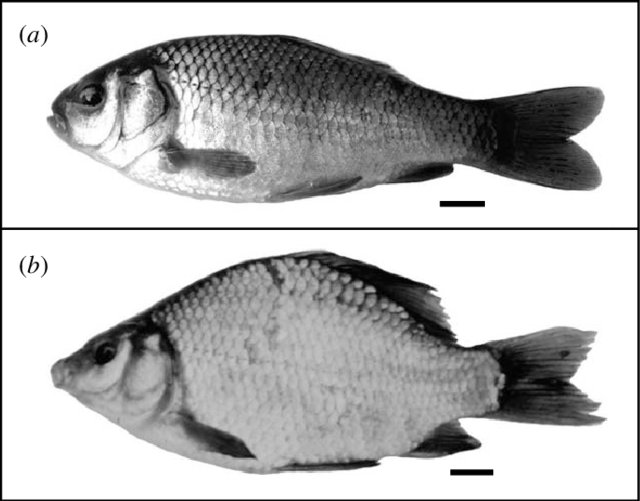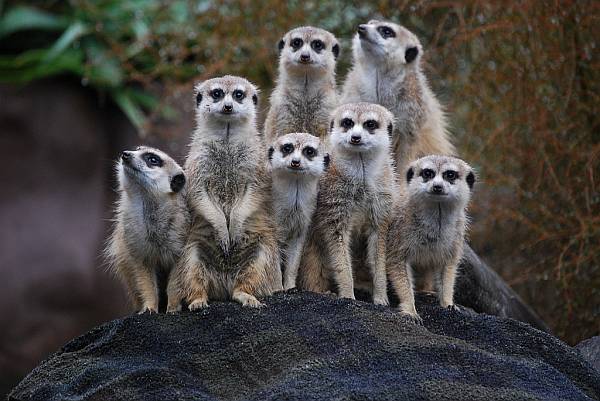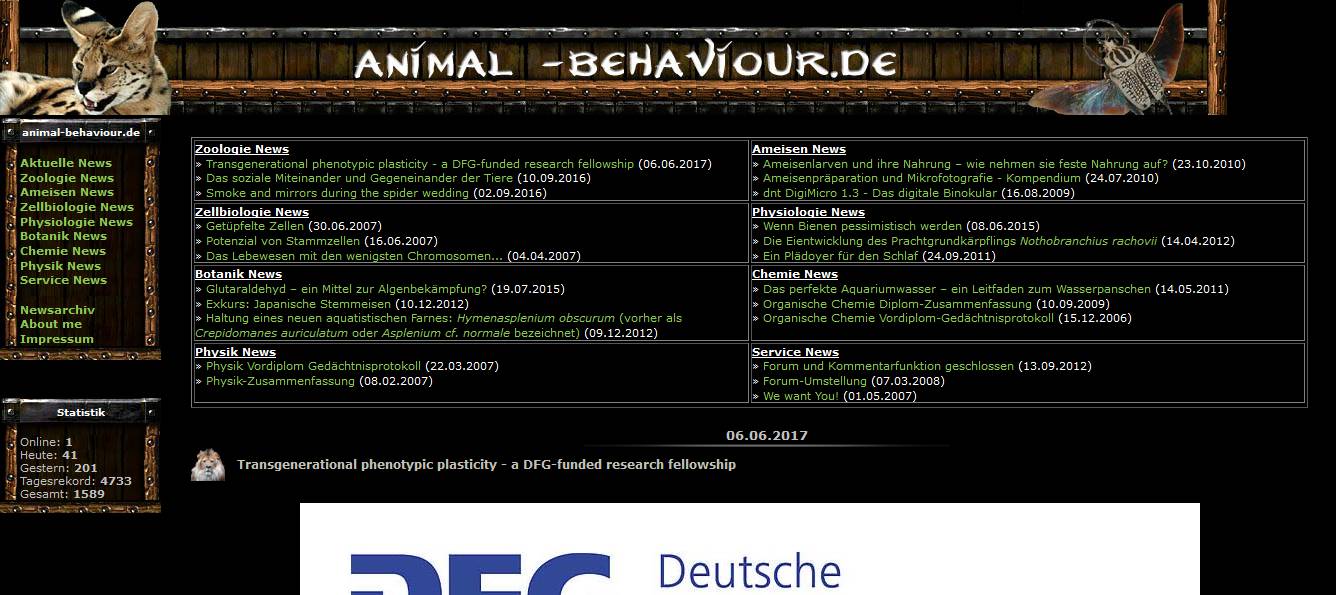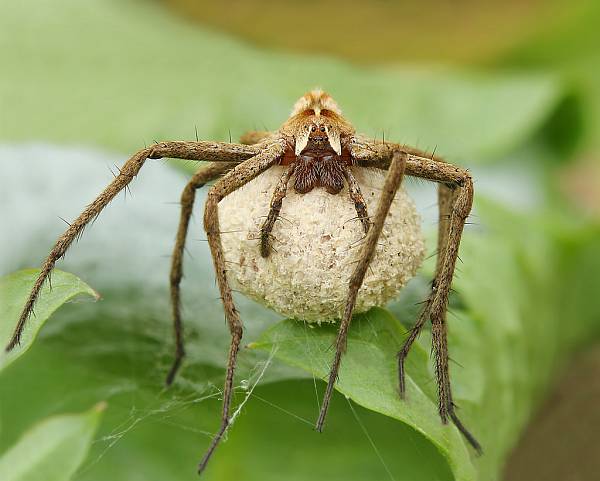Children are standing in front of the monkey enclosure at the zoo and watch a group of monkeys sitting together. They yell “How cute!”. Animals living together are not only cute to look at but group-living can also be beneficial. Animals that live in groups can better protect themselves from danger, find food together and support each other.
More animals, more eyes and ears
A lion stalking through high grass is almost invisible. However, with the help of several dozen eyes, antelopes can detect even such tiny movements. Numerous open ears can perceive the dry grass that is being crushed by the lion’s paws. A single antelope can’t do that because it has to lower its head to the ground to feed. In a group of antelopes, however, another animal can raise its head at the same time and monitor the area. If just a single animal notices a suspicious rustle in the grass, it can warn the other group members. Monkeys do the same – they warn each other of approaching leopards by screaming or noticeable movements. Sometimes, animals can even listen to warning calls of other species. In the rainforest, birds warn each other with alarm calls when leopards approach. Monkeys and other animals can listen in to these signals and are then informed about the leopard as well. The most common response to the presence of a predator is to escape.
Predator confusion through joint escape
Hundreds of legs, trampling in all directions at once – this view will confuse every predator. The predator needs to decide which prey to pursue. However, in large groups of escaping animals, individual animals are difficult to follow. So the predator needs time to focus, and this time is incredibly precious for the escaping animals. Every single step further away lowers the probability of being eaten. Additionally, a big group decreases the probability to get caught simply because of its numbers. If a predator catches a single animal from a group of ten, the risk for each animal to be that one is one tenth. However, if the size of the herd is a hundred animals, the probability to get caught and eaten is that much lower. Large aggregations of animals also prevent predators from finding them easily. This is because the groups gather within a few square meters in an area that may be several hectares in size. Roaming predators will thus less frequently find prey. However, even if a group is found, the group members will not always flee. Some species know how to defend themselves – be it with teeth, horns or claws.
Expelling predators through joint attack
Species armed with weapons are often able to hold their own against predators – especially when they are present in large numbers. One example is the buffalo, which can use its sturdy, large horns to put lions to flight. A single buffalo can be brought down by several lions. However, a dozen buffalos attacking can make even a group of lions leave without them having achieved anything. More intelligent animals like great apes know how to use tools for defence. With the help of long and tough sticks, groups of adult and aggressive chimpanzees even hunt leopards. In a study, researchers set up leopard dummies by covering a wooden scaffold with leopard skin. Subsequently, chimpanzees hit it aggressively with sticks and destroyed it completely. If this model had been a living leopard, its spine would have been shattered. Other apes throw objects for self-defence. They use stones, branches, fruits or any other tangible object to keep predatory cats or other dangerous animals away from their trees. The same happened to a researcher who was looking for monkeys. He found himself in a hail of fruit and eventually even a small monkey that was just within the reach of the angry ape was thrown at him. Hence, even as a predator, you cannot easily fool around with angry animals joining together in groups.
Finding food gets easier but also more difficult
More eyes make finding food easier. When food sources have high yield and are sparsely distributed, a single animal may have no hope of finding them on its own. Multiple animals however, can spread over a big area much more easily. However, if a tasty food source is found, an animal may try to benefit from it personally instead of telling other group members about it. This is especially pronounced if the amount of food is little. A quantity enough for a single animal can be only a drop in the ocean for a large group, leading to quarrels and aggressions over the meal. However, a cheating animal might easily be found out – after all, it smells like food after having enjoyed a tasty meal. The next time when the group looks for food, some other animals may inconspicuously follow the cheater and steal the next meal from it. Thus, living together can also cause conflicts and endanger the basic needs of individuals.
Fighting over mates
Not only food is a basic need of every living being. Reproduction is another. To continue the existence of its genes, every animal aims to have as many children as possible. In groups, this leads to single animals trying to monopolize the access to mates – strong and dominant individuals are likely to claim all fertile mates. This is because in the disputes over mates within a group, only the strongest animals will persevere. The dispute does not stop there. As soon as the strongest animals falls sick, becomes weak or gets old, the dispute starts anew. Living together thus is a never-ending source of conflicts – an issue that lone animals are not faced with.
Support in communities
Despite this competition, peaceful coexistence is possible. This is because in animal groups, members are often related to each other. Individual group members support each other in raising children and researchers have long wondered why they help so readily. When considering kinship, this is easy to explain. Relatives share genes and thus benefit from helping to raise offspring as well. Lonely siblings, aunts and grandmothers can thus use this opportunity to maximize the spread of their genes.
A paradise for parasites
Even when there are no squabbles between group members, other issues arise. One of these are tiny bacteria and parasites that make animals sick. Constant interaction between animals is exactly what these microbes like. Touching, sneezing , coughing or contact with poop transmits these parasites between individuals, which can then easily spread among the whole group. This phenomenon can collapse entire communities – which is what happened with the black plague during the Middle Age. On the other hand, continued contact with less lethal parasites in a group can lead to the formation of resistances within immune systems, causing all members to become immune to this disease easily.
The optimal group size
The advantages and disadvantages of group living are traded-off against each other, leading to an optimal group size for every population and its ecosystem. This number is affected by the amount of predators present, the abundance of food and potential mates as well as the incidence of disease, which can vary greatly even within nearby areas. Thus, in one area, a species can build solitary nests whereas in another, the same species can breed in groups of many hundreds of individuals.
In a zoo, however, good care can prevent most of the downsides of group living. Animal keepers stop predators from attacking the population, provide food in plentiful amounts and an even sex ratio. Additionally, veterinarians eradicate pathogens. Only this makes it possible for animals to be kept in large groups even within relatively small enclosures – much to the enjoyment of small children.







